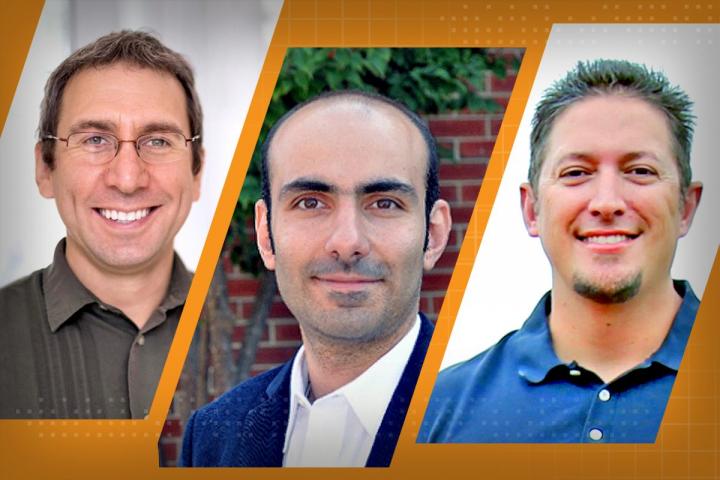
Credit: Virginia Tech
Each year, over 180 million tons of dust are swept up from the Sahara Desert, blown across the western edge of Africa, wisped across the Atlantic Ocean, and deposited throughout the Americas. These are called dust plumes, and they carry more than just sand.
In fact, dust plumes play a crucial role in the long-range transport of microorganisms. A team led by Virginia Tech researchers in collaboration with the U.S. Geological Survey and the University of La Laguna in the Canary Islands received a $1.1 million grant from NASA to study microbial diversity in dust plumes and the physics behind the transport of dust and microbes along superhighways in the sky.
“One of the less understood aspects of dust is that these particles could be a vehicle for microbes — viruses, bacteria, fungi that can come across the Atlantic, as if hitchhiking on these dust particles,” said Hosein Foroutan, the principal investigator on the grant and assistant professor in the Department of Civil and Environmental Engineering in the College of Engineering.
Foroutan and his collaborators will take a transdisciplinary approach to study the microbial biodiversity in dust plumes by analyzing collected samples, investigating satellite data, and creating transport models. Ultimately, this research will inform experts about which microbes are being transported to the Americas and what that could mean for the health of plants, domestic animals, and people.
To do this, the team is operating on an intercontinental scale. They will analyze dust samples collected from various sites between the United States and Africa, including the middle of the Atlantic. Sampling at various locations on the “dust superhighway” will allow the team to study differences in microbial biodiversity. Using DNA sequencing, culturing, and other microbiological techniques, the team will be able to determine the types, concentrations, and viability of microbes in the dust samples.
“Little is known about the diversity and viability of microbes traveling on African dust. Could devastating plant and animal pathogens be riding on African dust? If so, we would like to know where they are going and when they might arrive there,” said David Schmale, professor in the School of Plant and Environmental Sciences in the College of Agriculture and Life Sciences. As a collaborator, Schmale will work to identify microorganisms in dust samples.
But microorganisms are especially sensitive to the environment — temperature, altitude, precipitation, humidity, and ultraviolet radiation can all affect the survival of microbes. Coupled with atmospheric and satellite data, the researchers will be able to use microbial diversity data to peer into the life of microorganisms traveling in dust plumes from one continent to another.
“We’re lucky we can associate microbes with dust, which we can detect using satellites because we have no way of continuously detecting these airborne microorganisms on this scale. You’re talking about a huge scale — a couple thousand kilometers apart — and up to five to six kilometers above the surface,” said Foroutan, who is also an affiliated faculty member of the Fralin Life Sciences Institute and the Global Change Center at Virginia Tech.
Research on the microbial diversity in dust plumes can help scientists understand what kind of microbes may be blown in from overseas and how to prepare for that. Since species in the Americas have not evolved to deal with microbes native to other parts of the world, an invasive microorganism can pose a significant threat to plants, animals, or people.
“Pathogens are not respecters of international boundaries. One of my main motivations is to help farmers and others manage the risk that dust-borne microorganisms may pose. With better tracking and prediction tools, stakeholders can make informed choices about precautions they can take to halt the spread of disease and ensure a secure food supply for all of us,” said Shane Ross, a collaborator on this grant and a professor in the Department of Aerospace and Ocean Engineering. Ross studies transport using observational and simulation data and will be applying his expertise to analyze dust transport.
Due to the scale and complexity of this study, Foroutan said “no one can tackle this problem by themselves” and that interdisciplinary collaboration is key. Other investigators include Dale Griffin from the U.S. Geological Survey and Cristina González Martín from the University of La Laguna in the Canary Islands, who helped collect dust samples to analyze for this project.
As the project progresses in the future, the team hopes to put out an open call for international collaborators to contribute their samples for a more global analysis of this phenomenon.
###
Media Contact
Kristin Rose Jutras
[email protected]
Original Source
https:/




